1. Identification of Systems, Lines, and Stations
Stations are identified by signs displaying the stations' names located above every station entrance, connecting places to non-MRT areas and on platforms.
2. Direction Signs
These signs mainly provide guidance to main circulation routes and relevant facilities such as boarding (towards platforms and train direction), exit (all exit directions), interchanges, paths for the disabled, emergency exits, etc. To match the planning and design of architectural finishing and circulation inside stations, the installation forms can be lighted boxes, free-standing signs, and sticker-type signs.
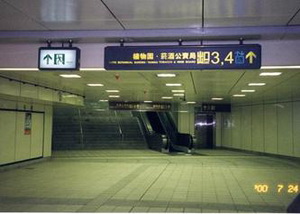 Lighted sign boxes guide the main circulation routes and important facilities. | 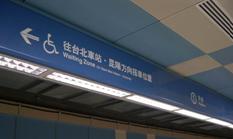 Sign guides the train direction for the disabled. |
3. Information Maps
These maps provide detailed subsidiary information and are located according to entrance/exit circulation, the service content and character of information on the maps. Information maps are categorized as follows:
(1) Taipei MRT System Route Map
Showing the MRT network at the current stage of operation, the map mainly provides information on stations, line locations and interchanging.
(2) Station Information Map
This map mainly displays a plan of each floor of the station and identifies the location of the main public facilities. The direction of the map corresponds to the reader's location, and a "You are here" point is indicated. (The lower half of the layout identifies each exit number and name)
(3) Station Location Map
This map indicates the area of stations, the location of each entrance/exit, streets and important buildings within 1.2-1.6 km around the station, locations of interchange facilities. The layout beneath the map indicates transfer information.
(4) Exit Information Map
If there are more than two entrances/exits to a station, in order to identify each exit direction, the main buildings and streets around each exit are listed in text to support the lighting-box signage. Some stations with complex passenger circulation, such as interchange stations, display sectional exit information map on the platforms to provide information of vertical circulation.
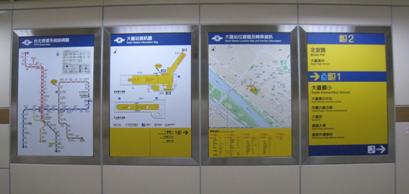 Left to Right: Taipei MRT Route Map, Station Information Map, Station Location Map, and Entrance/Exit Information Map |
(5) Single Route Map
Single route maps at stations without platform screen doors are usually located on the trackside walls close to the escalators or stairs or on the free-standing information panels at platform level. Single route maps at stations with platform screen doors are usually located on the overhead panels above the screen doors. This map indicates train direction at the side of platform and the station names along the route with the previous stations indicated in lighter colors.
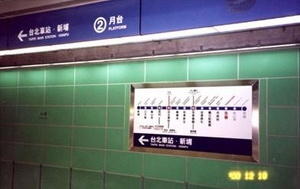 A single route map installed at the trackside wall of the platform. | 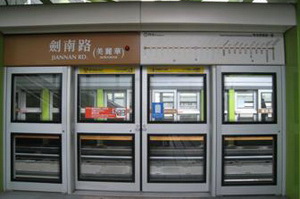 A single route map above the platform screen door. |
(6) Fare Map
Fare maps are posted on the panels above two Automatic Ticket Issuing Machines (ATIM) as well as on the top of each ATIM to provide information on ticket purchase and fares.
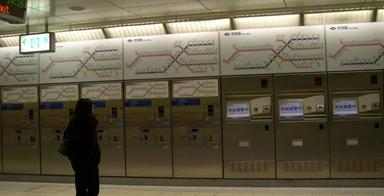 Fare Map |
(7) Fire-Fighting Equipment Plan
The content includes the locations of fire-fighting equipment such as the fire hose cabinet, fire extinguishers, and emergency exits on each floor. Each level is equipped with a fire-fighting equipment plan at minimum.
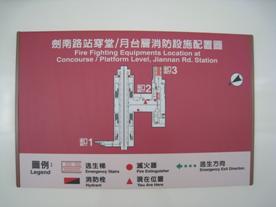 Fire- Fighting Equipment Plan |
Descriptive Signs
These signs illustrate the characteristics and use of each facility and area, such as toilets, information booths, room names, public phones, fire hose cabinets, instruction for emergency stop buttons, priority seats, parking spaces for wheelchairs, fire extinguishers, intercoms, etc.
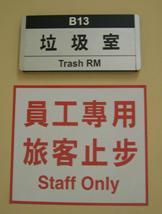 Above: Door Number & Name Sign Below: Staff Only – Warning Sign for passengers |
Warning Signs
Signs for restrictions or warnings of passenger behavior, such as signs prohibiting smoking and eating inside stations, signs reminding passengers to pay attention when using escalators, as well as warning signs, such as "Mind the Platform Gap," "No Entry," and "Danger High Voltage." Some warning signs also state penalties.
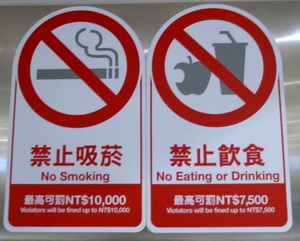 Signs Prohibiting Smoking and Eating |
Information on the above signs is fixed. The LED display panels inside the stations provide mixed information services and use mobile displays to provide information such as the present time, arrival time of trains, train direction, promotional information and even advertising. The LED display panels inside the trains indicate the arrival station names in order to enhance services for the hearing-impaired.
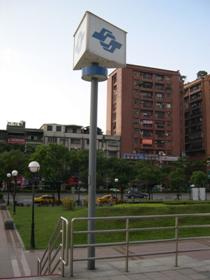
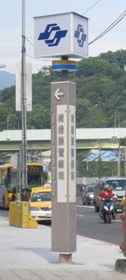
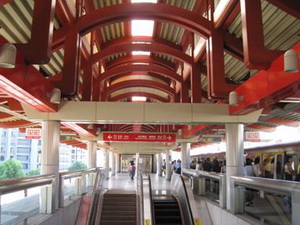
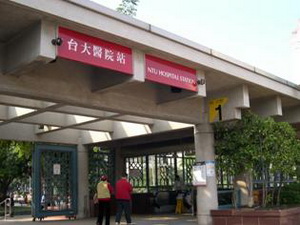
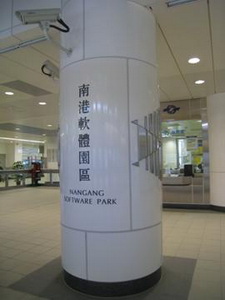










![Taiwan.gov.tw [ open a new window]](/images/egov.png)
